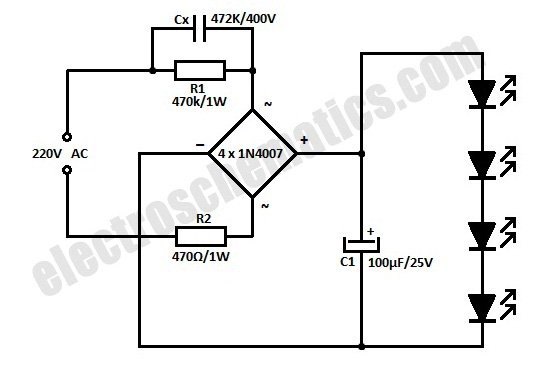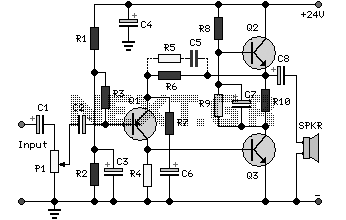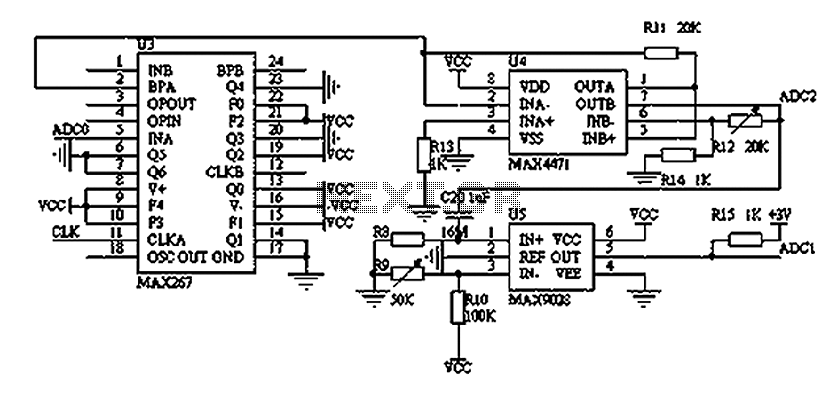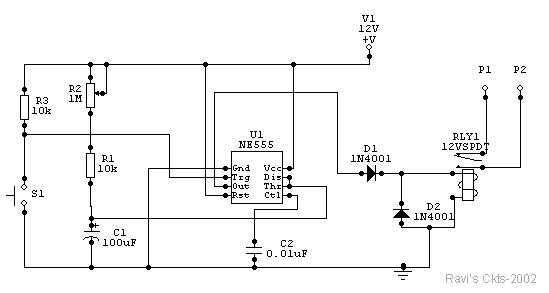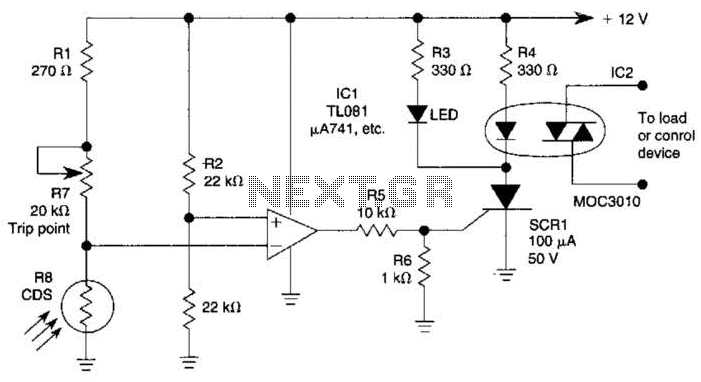
A quality tone control circuit using opamp and few passive components
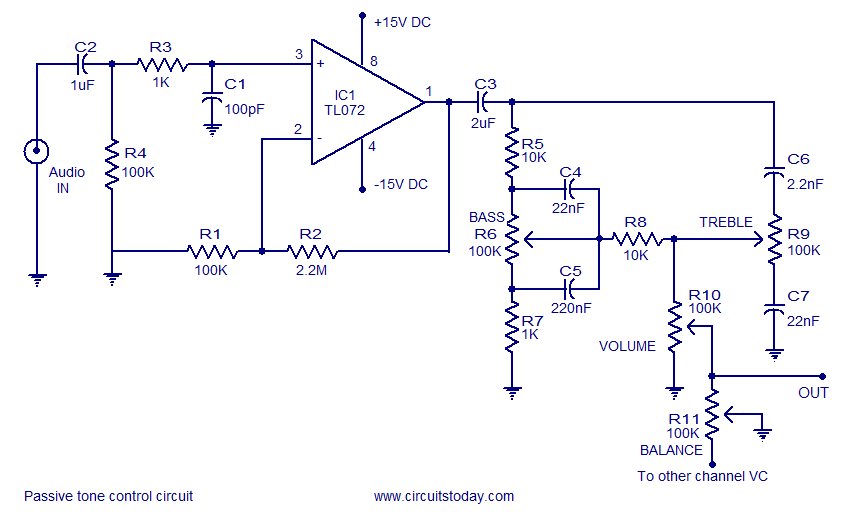
Tone control circuit utilizing an operational amplifier and a Baxandall passive tone control configuration. The overall gain is 25 dB, with a boost and cut capability of 20 dB. The circuit is powered by a dual 15V supply.
The tone control circuit described employs an operational amplifier (op-amp) as the core active component, facilitating the manipulation of audio signals to enhance or attenuate specific frequency ranges. The Baxandall tone control topology is particularly favored for its smooth response and minimal phase shift, making it ideal for audio applications.
In this configuration, the op-amp serves to amplify the audio signal while the Baxandall circuit, consisting of passive components such as resistors and capacitors, provides the necessary frequency shaping. The circuit allows for both treble and bass adjustments, enabling the user to achieve a desired tonal balance. The overall gain of 25 dB indicates that the circuit can significantly boost the audio signal, while the 20 dB boost and cut feature allows for precise control over the frequency response, accommodating various listening preferences.
The dual 15V power supply is critical for ensuring the op-amp operates within its optimal voltage range, thus maintaining signal integrity and minimizing distortion. Proper decoupling capacitors should be included near the power supply pins of the op-amp to filter out any noise that may affect performance. Additionally, the layout of the circuit should be considered to minimize interference and ensure that the signal path is as short as possible.
Overall, this tone control circuit is an effective solution for enhancing audio signals, providing users with the flexibility to adjust sound characteristics to their liking while maintaining high fidelity.Tone control circuit using opamp and a baxendall passive tone control circuit. Overall gain is 25db with 20db boost & cut. Powered using 15V dual supply.. 🔗 External reference
The tone control circuit described employs an operational amplifier (op-amp) as the core active component, facilitating the manipulation of audio signals to enhance or attenuate specific frequency ranges. The Baxandall tone control topology is particularly favored for its smooth response and minimal phase shift, making it ideal for audio applications.
In this configuration, the op-amp serves to amplify the audio signal while the Baxandall circuit, consisting of passive components such as resistors and capacitors, provides the necessary frequency shaping. The circuit allows for both treble and bass adjustments, enabling the user to achieve a desired tonal balance. The overall gain of 25 dB indicates that the circuit can significantly boost the audio signal, while the 20 dB boost and cut feature allows for precise control over the frequency response, accommodating various listening preferences.
The dual 15V power supply is critical for ensuring the op-amp operates within its optimal voltage range, thus maintaining signal integrity and minimizing distortion. Proper decoupling capacitors should be included near the power supply pins of the op-amp to filter out any noise that may affect performance. Additionally, the layout of the circuit should be considered to minimize interference and ensure that the signal path is as short as possible.
Overall, this tone control circuit is an effective solution for enhancing audio signals, providing users with the flexibility to adjust sound characteristics to their liking while maintaining high fidelity.Tone control circuit using opamp and a baxendall passive tone control circuit. Overall gain is 25db with 20db boost & cut. Powered using 15V dual supply.. 🔗 External reference
